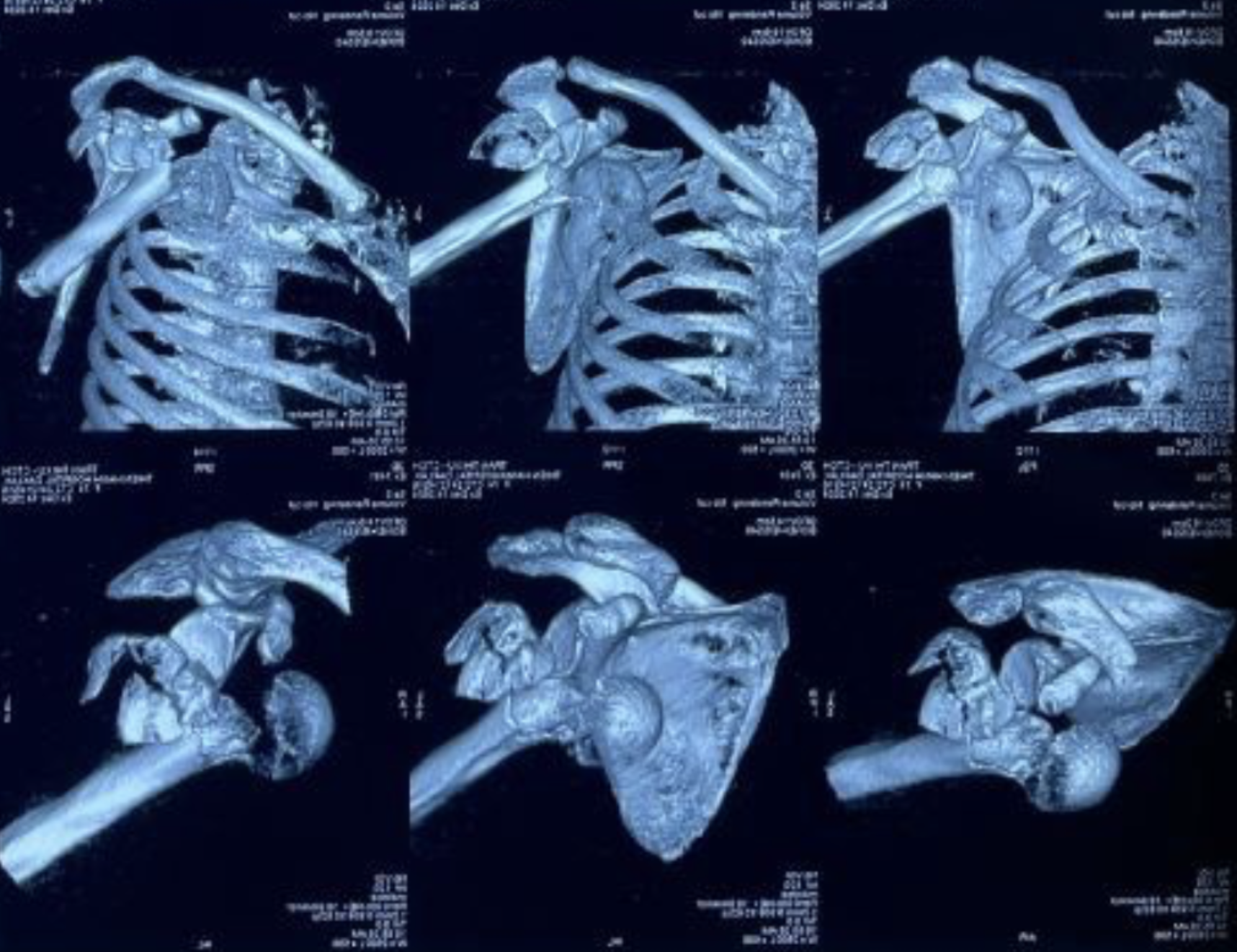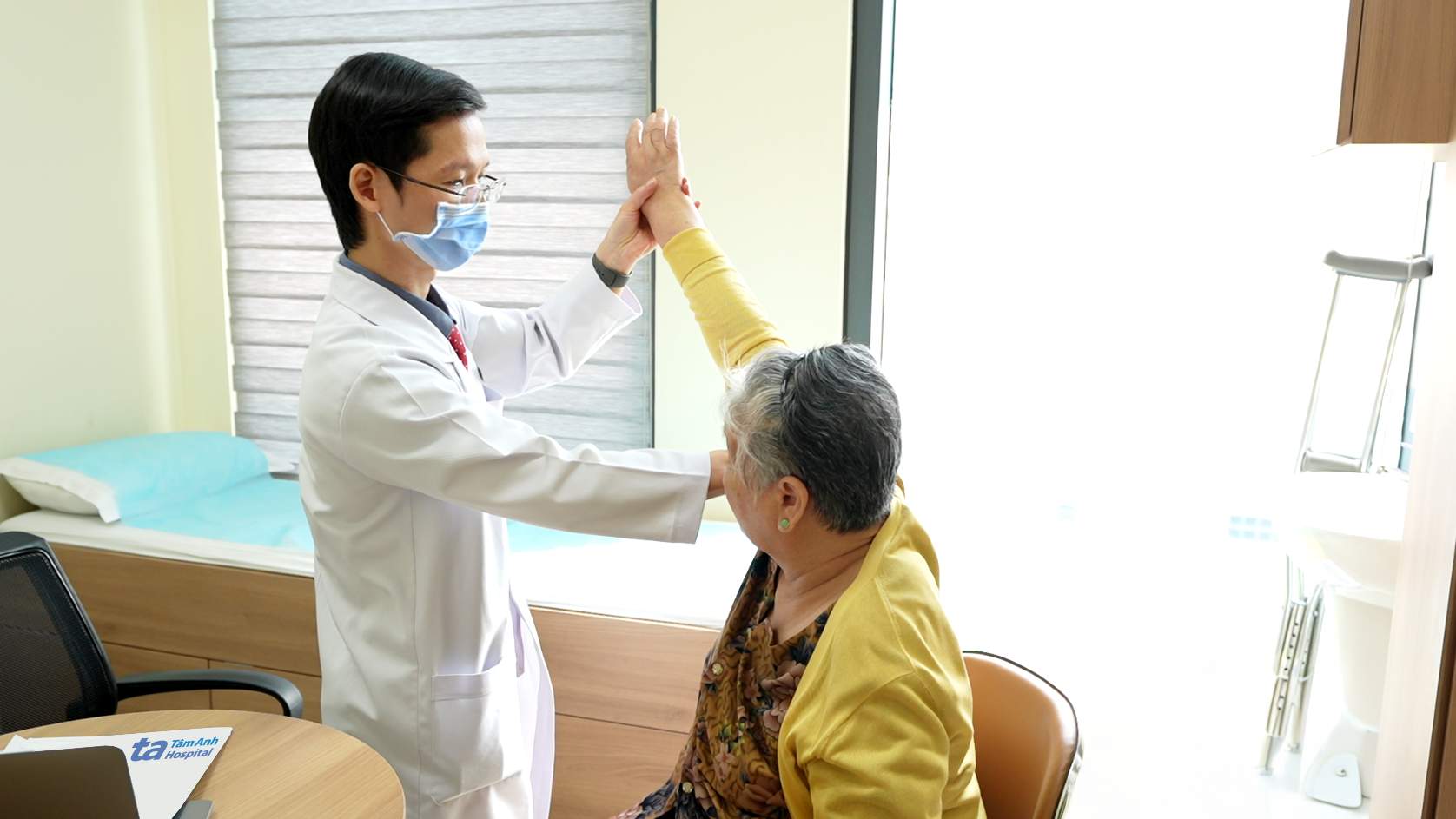Doctors at Tam Anh General Hospital in Ho Chi Minh City recently performed a double shoulder replacement on a 75-year-old woman who shattered both shoulder joints after a minor fall at home. "This is the first time Tam Anh General Hospital has treated a case of bilateral shattered shoulder joints following such a minor domestic injury," said Dr. Le Van Tuan, Director of the Orthopedic Trauma Center.
X-rays and 3D CT scans revealed complex 4-part fractures of the upper humerus on both sides, with the left shoulder also dislocated. A bone density scan showed severe osteoporosis, the primary reason her bones shattered so easily.
 |
CT scan showing the right shoulder joint (top row) fractured into multiple pieces, and the left shoulder joint fractured and dislocated. Photo: Tam Anh General Hospital |
CT scan showing the right shoulder joint (top row) fractured into multiple pieces, and the left shoulder joint fractured and dislocated. Photo: Tam Anh General Hospital
While bone grafting is usually preferred for shoulder fractures, Xu’s case presented additional complications, including the dislocation, rotator cuff damage, and severe osteoporosis. These factors meant her bones lacked the strength to hold screws, making bone grafting risky and prone to re-fracture. The surgical team decided to replace both shoulder joints in a single operation to minimize hospitalization and the risks associated with anesthesia.
Doctors opted for reverse total shoulder arthroplasty due to its safety and effectiveness. Dr. Mai Hoang Duong of the Orthopedic Trauma Center explained that this procedure involves swapping the positions of the glenoid (shoulder socket) and humeral head (top of the arm bone). This improves shoulder abduction (lifting the arm away from the body), increases stability and range of motion, and minimizes the risk of dislocation, making it particularly suitable for older patients with complex upper humerus fractures.
Using a deltopectoral approach, the surgical team accessed the shoulder joints without cutting muscles, minimizing pain and allowing for faster post-operative rehabilitation. Xu was positioned in a beach chair position, with her upper body elevated at a 30-60 degree angle. This improved visibility of the shoulder joint and surrounding structures, enabling precise surgical maneuvers, reducing strain and the risk of brachial plexus nerve damage, and minimizing blood loss. A C-arm, a mobile X-ray machine, provided real-time imaging during the surgery, ensuring accurate placement of the artificial joint components. The operation lasted over three hours.
Xu began rehabilitation exercises two days post-surgery and had her stitches removed two weeks later, starting osteoporosis treatment concurrently. At her follow-up appointments, she demonstrated good mobility in both shoulder joints, successful bone healing, and the ability to perform daily activities independently.
 |
Dr. Duong checks Xu’s shoulder joint mobility during a follow-up examination. Photo: Tam Anh General Hospital |
Dr. Duong checks Xu’s shoulder joint mobility during a follow-up examination. Photo: Tam Anh General Hospital
Dr. Tuan emphasized that osteoporosis is a common but often silent condition. It causes bone and joint pain and increases the risk of fractures and vertebral compression, leading to serious complications. He recommends regular osteoporosis screening for older adults, especially post-menopausal women, to manage the disease effectively and improve quality of life. He also advised families with elderly members to ensure a safe home environment by keeping floors clear of obstacles and clutter, using non-slip materials, installing handrails, and providing adequate lighting in frequently used areas, particularly hallways and stairs, to prevent falls.
Phi Hong












